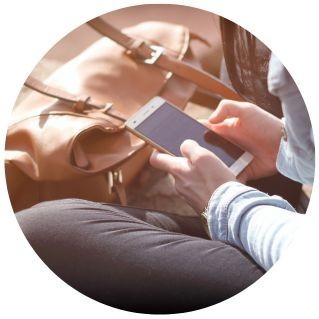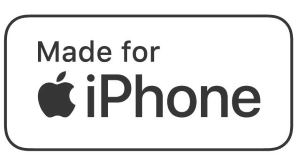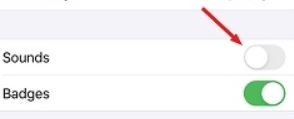
Pairing Hearing Aids to Bluetooth and Mobile Phones
How to pair your hearing aids with your smartphone using Bluetooth
| Hearing Aid UK 2025-11-04 Update |
Pairing hearing aids to mobiles
Pairing hearing aids to mobile phones allows you to stream phone calls, music, and other audio directly to your hearing aids. In this article, I will be going through the steps you can follow to pair your hearing aids with your mobile phone, in the hope that you find it useful.
Check the compatibility
Before attempting to pair your hearing aids with your mobile phone, make sure your hearing aids are compatible with your phone. Many hearing aid manufacturers have a list of compatible devices on their websites.
Connecting your hearing aids to your iPhone and Android smartphone with Bluetooth
Before I start, I'd like to state that I am aware that there are slight differences in how the pairing process is done. It all depends on the hearing aids you have and what smartphone you currently have in use.
But, to simplify things, here is the universal process for pairing your hearing aids with your mobile if you have 2.4GHz-enabled hearing aids.

Pairing your iPhone and Android mobile to your hearing aids
Step by step instructions
1. Switch on your Bluetooth on your smartphone. This is generally found in the 'settings' section.
2. Then turn on your 'hearing aids' accessibility. To pair your hearing aids with an iPhone, go to Settings > Accessibility > Hearing Devices
To pair your hearing aids with an Android smartphone, go to the Bluetooth Menu
Please note that sometimes your hearing aids might not pair straight away. If this is the case, try opening and closing your battery door or turning them on and off again.


3. Then select your hearing aids to finalise the pairing process.
How to select the hearing aid streaming options on your smartphone
Select what to stream to your hearing aids using the process below:
a. If you want to stream only your phone calls on iPhone, you go to Settings > Accessibility > Hearing Devices > Audio Routing > Media Audio and then choose 'Never Hearing Devices'
To stream only your phone calls on Android smartphones, just disable the apps that stream audio directly.
b. To stream audio from your chosen apps into your hearing aids - For both iPhone and Android smartphones, go to Settings > Notifications and turn off sound where appropriate.
Please note that Android phones may have an option to disable all app sounds with a single button.
c. To enable touchscreen and keyboard sounds - For iPhones, go to Settings > Sounds and turn on Keyboard Clicks as well as Lock Sound. For an Android phone, go to Settings > Sounds > Vibration



Still having problems pairing your hearing aids to your iPhone and Android smartphone?
If you're still having difficulty pairing your mobile to your hearing aids, then try the checks below first - failing that, speak to your audiologist and they will be happy to assist you.
- Turn on and off the aeroplane mode.
- Turn off the WIFI while you are pairing your devices.
- Turn your phone on and off.
- Double-check that Bluetooth is turned on, your hearing aids are in range, and the batteries are new, fresh, or charged.

Pairing your hearing aids to your mobile
What are the benefits?
Mobiles can offer hearing customisation and enhanced accessibility
Pairing hearing aids with mobile devices offers several benefits, enhancing the overall listening experience for individuals with hearing loss. Here are some of the advantages:
- Improved sound quality: By connecting hearing aids to mobile devices, users can stream audio directly to their hearing aids. This direct streaming reduces background noise and interference, which results in clearer and more natural sound quality.
- Enhanced accessibility: Pairing hearing aids with mobiles improves accessibility by enabling individuals with hearing loss to take full advantage of their mobile devices.
For example, they can listen to phone calls, video calls, music, podcasts, and other audio content directly through their hearing aids, without relying on external speakers or headphones.
- Customisation and control: Many hearing aid apps allow users to personalise and adjust their hearing aid settings according to their preferences. Mobile connectivity provides a convenient way to access and control these settings.
Users can fine-tune the volume, change listening programs, adjust equalisation, and modify other parameters using their mobile devices.
- Convenience and connectivity: With hearing aids connected to mobiles, users can receive audio notifications, alerts, and alarms directly in their hearing aids. This connectivity feature enhances convenience and ensures that individuals with hearing loss do not miss important information or events.
- Hands-free communication: Pairing hearing aids with mobiles enables hands-free phone conversations. Users can answer or make phone calls directly through their hearing aids, using their mobile devices as a remote control.
This feature is particularly useful for individuals with dexterity issues or those who prefer a seamless and effortless communication experience.
- Tinnitus management: Some hearing aid apps and mobile devices offer specialised tinnitus management features. These features can help individuals with both hearing loss and tinnitus by providing sound therapy and customisable tinnitus relief sounds through their hearing aids.
- Remote support: Many hearing aid manufacturers and audiology clinics offer remote support and adjustments through mobile apps. This allows users to receive professional assistance, fine-tuning or troubleshooting without visiting a clinic in person.
Remote support saves time and offers convenience, especially for individuals who have difficulty travelling or those living in remote areas.
Pairing hearing aids to mobile phones
The benefits may vary depending on the specific hearing aid model, mobile device compatibility, and app features. Therefore, it's advisable to consult with a hearing care professional to determine the most suitable options for your individual needs.
Please remember that the exact steps of pairing may vary depending on your hearing aids and mobile phone. If you're having trouble pairing your hearing aids to your mobile phone, consult the manual or contact your hearing aid manufacturer or audiologist for assistance.
Call us free on 0800 567 7621 to speak to one of our audiologists for more information and support.
Our specialist service includes:
Do not spend hundreds of pounds without getting a second opinion from us.
Please call us on 0800 567 7621
 Not only are the prices great, but the service is fantastic! Many thanks to your team.
Not only are the prices great, but the service is fantastic! Many thanks to your team.Other Bluetooth hearing aid pages you might like...
What's included in our hearing aid prices?
FAQs
In general, any audiologist will always recommend to you the hearing aid model that best suits your needs. Here is a useful checklist to make sure that is the case.
- Audiologist's level of knowledge: The audiologist you have seen will hopefully have a wide knowledge of all available hearing aids; however, some will only be familiar with a small number of brands and, therefore, may not really be in a position to know which model is the best for you. It is OK to challenge their recommendation and ask them to justify why this particular brand is the one for you.
- Do research: Read about the hearing aid that was recommended. Does it seem like it will suit your lifestyle? Does it have more or fewer features than you need?
- Be aware of sales targets: Many high street retailers have specific tie-ins to a particular manufacturer/brand. The hearing aid they have suggested may still be the correct one for you, but do your research so that you know why they might have recommended it.
If you have significant hearing loss in both ears, you should be wearing two hearing aids. Here are the audiological reasons why:
Localisation: The brain decodes information from both ears and compares and contrasts them. By analysing the minuscule time delays as well as the difference in the loudness of each sound reaching the ears, the person is able to accurately locate a sound source.
Simply put, if you have better hearing on one side than the other, you can't accurately tell what direction sounds are coming from.
Less amplification is required: A phenomenon known as “binaural summation” means that the hearing aids can be set at a lower and more natural volume setting than if you wore only one hearing aid.
Head shadow effect: High frequencies, the part of your hearing that gives clarity and meaning to speech sounds, cannot bend around your head. Only low frequencies can. Therefore, if someone is talking on your unaided side, you are likely to hear that they are speaking, but be unable to tell what they have said.
Noise reduction: The brain has its own built-in noise reduction, which is only really effective when it is receiving information from both ears. If only one ear is aided, even with the best hearing aid in the world, it will be difficult for you to hear in background noise as your brain is trying to retain all of the sounds (including background noise) rather than filtering them out.
Sound quality: We are designed to hear in stereo. Only hearing from one side sounds a lot less natural to us.
Fancy some further reading on this topic? You can read about why two hearing aids are better than one in our article, hearing aids for Both Ears, here
For most people, the main benefit of a rechargeable hearing aid is simple convenience. We are used to plugging in our phones and other devices overnight for them to charge up. Here are some other pros and cons:
For anybody with poor dexterity or issues with their fingers, having a rechargeable aid makes a huge difference, as normal hearing aid batteries are quite small and some people find them fiddly to change.
One downside is that if you forget to charge your hearing aid, then it is a problem that can't be instantly fixed. For most, a 30-minute charge will get you at least two or three hours of hearing, but if you are the type of person who is likely to forget to plug them in regularly, then you're probably better off with standard batteries.
Rechargeable aids are also a little bit bigger and are only available in Behind-the-Ear models.
Finally, just like with a mobile phone, the amount of charge you get on day one is not going to be the same as you get a few years down the line. Be sure to ask what the policy is with the manufacturer's warranty when it comes to replacing the battery.
For most people, the answer is yes. But it's never that simple.
The majority of hearing problems affect the high frequencies a lot more than the low ones. Therefore, open fitting hearing aids sound a lot more natural and ones that block your ears up can make your own voice sound like you are talking with your head in a bucket. Therefore, in-ear aids tend to be less natural.
However, the true answer is we can't tell until we have had a look in your ears to assess the size of your ear canal, and until we have tested your hearing to see which frequencies are being affected.
People with wider ear canals tend to have more flexibility, also there are open fitting modular CIC hearing aids now that do not block your ears.
There is also the age-old rule to consider, that a hearing aid will not help you if it's sat in the drawer gathering dust. If the only hearing aid you would be happy wearing is one that people can't see, then that's what you should get.
Most people can adapt to any type of hearing aid, as long as they know what to expect. Have an honest conversation with your audiologist as to what your needs are.
Generally speaking, six or more. Unless it's none at all. The number of channels a hearing aid has is often a simplistic way an audiologist will use to explain why one hearing aid is better than another, but channels are complex, and it is really not that straightforward. Here are some reasons why:
Hearing aids amplify sounds of different frequencies by different amounts. Most people have lost more high frequencies than low, and therefore need more amplification in the high frequencies. The range of sounds you hear is split into frequency bands or channels, and the hearing aids are set to provide the right amount of hearing at each frequency level.
Less than six channels, and this cannot be done with much accuracy, so six is the magic number. However, a six-channel aid is typically very basic with few other features and is suitable only for hearing a single speaker in a quiet room. The number of channels is not what you should be looking at; it's more the rest of the technology that comes with them.
As a final note, different manufacturers have different approaches. One method is not necessarily better than any other. For example, some manufacturers have as many as 64 channels in their top aids. Most tend to have between 17 and 20. One manufacturer has no channels at all.
Manufacturer's warranties typically last between 2-5 years, depending on the brand and model, and cover defects in materials and workmanship. This includes repairs for component failures, electronic malfunctions, and manufacturing defects, but excludes damage from misuse, accidents, or normal wear. Most manufacturers also include loss and damage insurance for the first year.
We handle all warranty claims on your behalf, liaising with manufacturers and ensuring you get replacement devices quickly when needed. This comprehensive warranty coverage, combined with our lifetime aftercare, gives you complete peace of mind.
Our hearing tests are completely free, whether at our clinics or in your home. Unlike other providers who charge £30-£100 for home visits, we believe hearing healthcare should be accessible without financial barriers. Our comprehensive assessments include examination by a registered audiologist, audiogram results, and personalised recommendations.
All testing, future adjustments, and ongoing support are included at no extra cost. While NHS tests are also free, typical 6-week waiting periods often lead people to seek immediate private testing. We provide prompt, professional assessments that fit your schedule and budget.
Yes, we offer completely free home visits throughout the UK, and this service is included in our prices with no additional charges. Home visits are particularly valuable for people with mobility issues, busy schedules, or those who simply prefer the comfort and convenience of their own environment.
Our audiologists can conduct full hearing tests, fit hearing aids, and provide ongoing support in your home. This service sets us apart from many providers who either don't offer home visits or charge extra for them.
We can offer prices up to 40% lower than high street retailers because of our business model. As a network of 200+ independent audiologists, we don't have the massive overheads of large retail chains - no expensive high street premises, no sales targets pushing audiologists to sell the most expensive options, and no costly marketing campaigns.
However, we maintain the same buying power as the big chains because we purchase on behalf of our entire nationwide network. This means you get access to the same premium hearing aids with professional service, but at genuinely competitive prices.
We offer a comprehensive 60-day money-back guarantee, which gives you twice the industry standard time to properly assess whether your hearing aids are right for you. This extended period recognises that adjusting to hearing aids takes time, and your brain needs several weeks to adapt to the amplified sounds.
Unlike many providers who offer just 30 days, we believe 60 days gives you the confidence to test your hearing aids in all the situations that matter to you - from quiet conversations at home to busy restaurants and outdoor activities.
Ask the Experts
6 Morton Lane
Walkwood
Redditch
Worcestershire
B97 5QA
Latest Launch
When we refer to a product as 'Latest Launch', we mean it is the latest to be released on the market.
New
When we refer to a product as 'New', we mean that the product is the newest hearing aid model on the market.
When we refer to a product as 'Superseded', we mean that there is a newer range available which replaces and improves on this product.
Older Model
When we refer to a product as an 'Older Model', we mean that it is has been superseded by at least two more recent hearing aid ranges.
